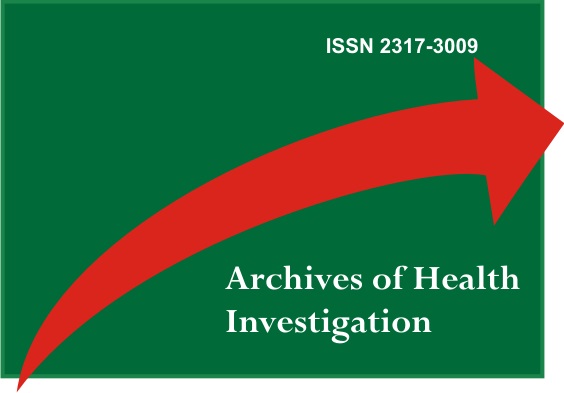Análisis de la dificultad de los estudiantes de graduación frente a los procedimientos clínicos de periodoncia
DOI:
https://doi.org/10.21270/archi.v10i6.5191Keywords:
Dentistry, Teaching, PeriodonticsAbstract
Objectives: This study assessed the main difficulties reported by final year students of the University of Serra Gaúcha (FSG), Dentistry Faculty during the implementation of basic periodontal procedures. Materials and Methods: We applied to the participants a structured questionnaire with 14 objective questions that addressed relevant steps of basic periodontal treatment. The degree of difficulty was evaluated by Likert scale 0 = none, 1 = mild, 2 = moderate, 3 = high and 4 = very high. For the data analysis, the degree of difficulty was dichotomized in any mild, moderate, and high and very high. Results: The study included 46 students enrolled in the last semester of Dentistry Faculty of the University of Serra Gaúcha (FSG). Marking the clinical attachment loss (CAL) was the procedure described as High / Very High difficulty by students, followed by moderate difficulty procedures. However, anesthetize and diagnosing gingivitis were the only procedures reported by all students (100%) as performed having no difficulty. Conclusion: According to the results obtained in this study, it can be concluded that periodontal procedures reported as the greatest difficulties by students of Dentistry faculty of the University of Serra Gaúcha (FSG), are the periodontitis diagnostic procedures and displaying the clinical attachment loss.
Downloads
References
Lotufo R. Roberto Lotufo: entrevista. Dental Press Perio Implant. 2007;1(4):15-24.
Saini R, Marawar PP, Shete S, Saini S. Periodontitis, a true infection. J Glob Infect Dis. 2009;1(2):149-50.
Nagle MM, Piveta ACG, Ricci WA, Montadon AFB. Dificuldades relatadas por estudantes de odontologia diante de procedimentos relacionados à periodontia. Rev ABENO. 2010;10(1):37-41.
Campos JR, Barbosa FI. Diagnóstico Periodontal: conhecimentos e atitudes de estudantes de Odontologia. Arq Odontol. 2018, 54:1-7.
Gotteher NR, Martin JL. A future for periodontal therapy. Dent Today. 2010; 29(2):154,156-57.
Dias Sobrinho J. Avaliação – política e reformas da educação superior. São Paulo: Cortez; 2003.
López NJ, Smith PC, Gutierrez J. Periodontal therapy may reduce the risk of preterm low birth weight in women with periodontal disease: a randomized controlled trial. J Periodontol. 2002; 73(8):911-24.
Cruz SS, Costa MCN, Gomes-Filho IS, Vianna MIP. Doença periodontal materna como fator associado ao Baixo Peso ao Nascer. Rev Saúde Pública. 2005;39(2).
Gomes F. Critérios para o Diagnóstico Clínico da Doença Periodontal. J Bras Clín Odontol Integr Saúde Bucal Colete. 2005;9(49):88-9.
Susin C, Dalla Vecchia CF, Oppermann RV, Haugejorden O, Albandar JM. Periodontal attachment loss in an urban population of Brazilian adults: effect of demographic, behavioral, and environmental risk indicators. J Periodontol. 2004;75(7):1033-41.
Haffajee AD, Cugini MA, Dibart SS, Kent RL, Socransky SS. The effect of SRP on the clinical and microbiological parameters of periodontal diseases. J Clin Periodontol. 1997;24:324-34.
Cugini MA, Haffajee AD, Smith C, Kent RL, Socransky SS. The effect of scaling and root planning on the clinical and microbiological parameters of periodontal diseases: 12 mounths results. J Clin Periodontol. 2000;27(1): 30-6.
Cobb CM. Clinical significance of non-surgical periodontal therapy: an evidence based perspective of scaling and root planning. J Clin Periodontol. 2002;29(Suppl¬ 2):6-16.
Carvalho LH, D’Avila GB, Leão A, Haffajee AD, Socransky SS, Feres M. Scaling and root planing, systemic metronidazole and professional plaque removal in the treatment of chronic periodontitis in a Brazilian population. II. Microbiological results. J Clin Periodontol. 2005;32(4):406-11.
Bosi SV, Feron L, Marcon J, Butze JP. Perfil dos pacientes atendidos na clínica de periodontia do Centro Universitário da Serra Gaúcha (FSG). Arch Health Invest. 2018;7(6):233-36.


